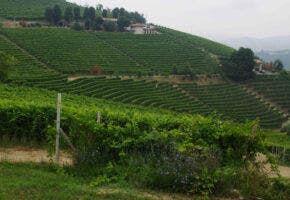What is Nebbiolo
Piedmont region of northern Italy, which is its spiritual home. There, it is responsible for highly respected Barolo and neighboring Barbaresco. These wines have the potential to age decades or longer and are considered some of the most sought after in the world.
In the vineyard, the grapes are deep purple, but they yield crimson wines that tend to turn rusty in color with age.
This early-budding grape prefers calcareous marl soils. It also thrives in cooler, drier microclimates. Owing to its thin skin, Nebbiolo is a notoriously fickle grape.
The famous descriptors attributed to Nebbiolo are tar and roses. The grape has a naturally floral component, often evoking, too, violets and other purple flowers. Younger Nebbiolo also has aromas of bright red fruit, like raspberry and cherry. Wines made from Nebbiolo are tannic and bright, with spice and earth in the background.
Nebbiolo in Italy
Native to Italy’s north, Nebbiolo is the sole grape used in Barolo and Barbaresco, where it produces elegant, ageworthy wines from south-facing hillside sites. In other Piedmont regions like Gattinara, Ghemme and Roero, other grapes can be added to the wine, yet Nebbiolo remains the dominant player. Langhe and Nebbiolo d’Alba produce lighter styled Nebbiolo that can be enjoyed in the near term. In Lombardy, it is the main grape in the wines of Valtellina where it is known as Spanna.
Global Production
There are very few plantings of Nebbiolo outside of Italy. A spattering of plantings can be found on the West Coast of the United States, stretching from the Central Coast of California up to Washington.
Synonyms
Nebbiolo grapes are found in red, rose, sparkling, and dessert wines.










